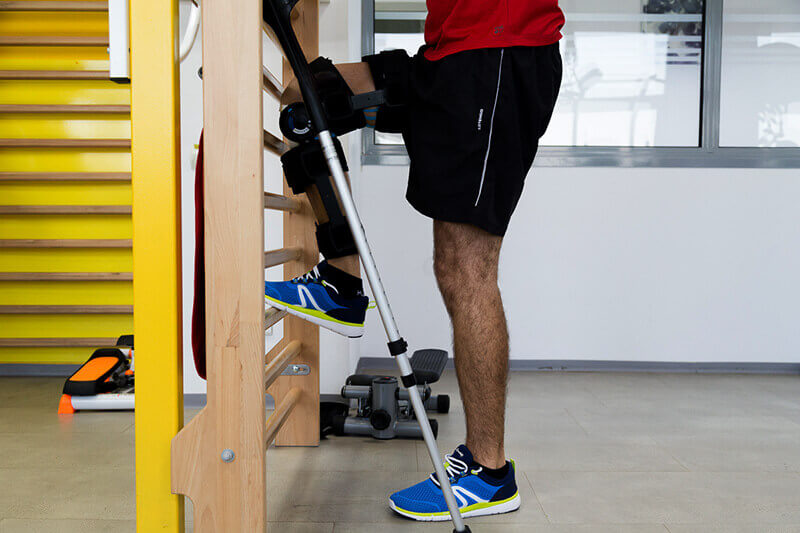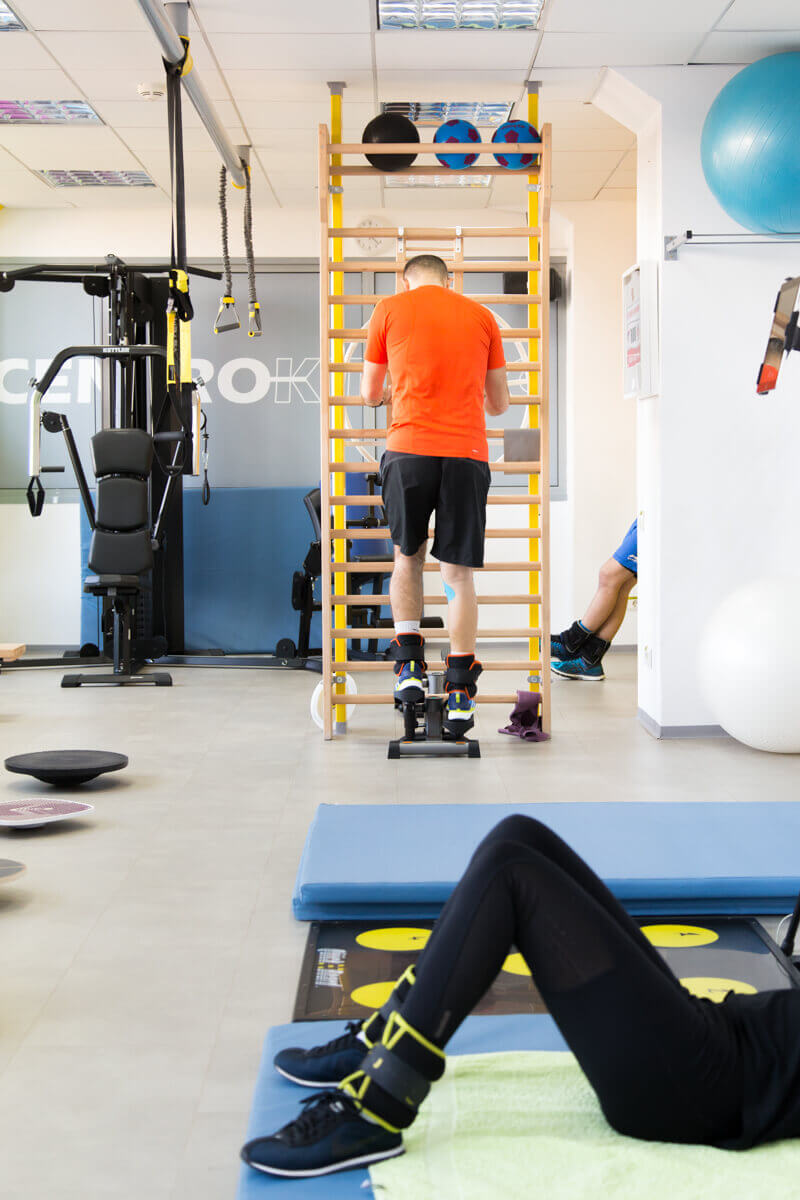See details
READ MOREKnee rehabilitation
The knee is the largest articulation of the body, being also the most prone to injuries. With the help of the knee articulations, we can walk, run or sit on our knees without pain. At the same time, depending on the situation and activity, the knee will support the multiplied body weight. Stability and mobility of the knee are given by the interaction between bones, muscles, tendons, cartilage and other soft parts of the knee articulation.
Knee pathology is primarily due to overload (we are talking here about performance athletes or even amateur athletes who practice intense physical activity), as well as various injuries (falls, certain wrong movements).
The most common pathologies found in the knee are lesions of the cruciate ligaments, collateral ligaments, cartilage or lesions of the meniscus. Symptoms of these pathologies include pain and partial functional impotence (decreased mobility), as well as articulation instability.

Frequent diagnoses:
1. Meniscus rupture: symptoms of this condition include articulation pain, hydrarthrosis / hemarthrosis, partial functional impotence (especially when climbing and descending stairs), and articulation instability (the patient accuses him of jumping his knee and putting it back).
The diagnosis involves a detailed history, a thorough clinical examination and an imaging investigation (usually the most eloquent is the MRI investigation). Therapeutic options include both conservative treatment and surgical treatment. Conservative treatment is eligible only in stable longitudinal ruptures.
2. Cruciate ligament injuries: There are two, LIA and LIP, that play a particularly important role in knee stability. The diagnosis is based on the anamnesis, the clinical examination, as well as an imaging investigation (MRI). These lesions can also be diagnosed by specific clinical maneuvers, but well-developed muscles can mask even complete ligament ruptures. That is why we will rely primarily on imaging examination (MRI) which not only certifies our diagnosis, but can also give us a complete assessment of the knee, providing information about the complementary structures that could be damaged at the time of trauma: meniscus, articular cartilage.
The treatment is always surgical and consists in restoring the injured ligament with a graft, usually taken from the patient. The ultimate goal of treatment is to regain knee stability and return to the desired sports activities.

3. Collateral ligament injuries: much less common than medial collateral ligament injuries, lateral collateral ligament injuries cause a greater degree of instability in the knee. Symptoms include pain and joint instability. The definite diagnosis is made with the help of an imaging investigation, usually an MRI. The treatment is especially conservative and consists of rest (with or without immobilization) to allow the ligament to heal. At the same time, the emphasis is on decreasing the intensity of pain and swelling of the knee, for which the patient is advised to apply ice permanently at the knee, and being prescribed an anti-inflammatory medication. Once the pain and swelling have subsided, we can begin the process of physical therapy to regain normal mobility of the knee. Surgically we have two options, suturing or ligament reconstruction.
4. Articular cartilage lesions: these can often be omitted, the diagnosis being one of exclusion, these lesions being often revealed by arthroscopic intervention. The most common symptom is pain. Because the articular cartilage has no innervation, the pain will not appear until the chondral lesion is in contact with the subchondral bone, if the patient has an inflammatory reaction (synovitis) or if there are other associated pathologies (instability, meniscal damage). Other signs and symptoms include articulation cracks, articulation blockage or the presence of intra-articular free bodies. The treatment is conservative or surgical. Conservative treatment includes lavage and debridement of articular cartilage, blast simulation techniques, Pridle drilling, Steadmann microfractures, osteochondral transplantation, or autologous chondrocyte implantation.

5. Dissecting osteochondritis of the knee: especially at the distal extremity of the femur, compared to the proximal extremity of the tibia. An articular surface affected by dissecting osteochondritis does not heal naturally. Even with surgical resolution, dissecting osteochondritis will leave sequelae and cause other secondary conditions, such as degenerative arthritis or osteoarthritis.
6. Femur-patellar chondromalacia (or femur-patellar osteoarthritis): is a common pathology in the knee and affects both the patella and the femur. When we talk about chondromalacia, we refer to the damage of the articular cartilage, while the term patelo-femoral pain refers to the stages before the disease, when the patient complains of pain but the cartilage is not affected. Thus, the determining symptom of this pathology is pain. The diagnosis is difficult and is given primarily by imaging examinations (MRI). The treatment of choice is conservative and consists of controlling pain and inflammation. For this you need physical therapy, as well as ice and ultrasound massage. When the pain and inflammatory process have subsided, your physiotherapist will work with you to improve mobility, strength and muscle balance. Only when conservative treatment has not shown signs of improvement can we think of a surgical option.
SUCCESSFUL RECOVERY STORIES

MAKE AN APPOINTMENT
CONTACT US
MAKE AN APPOINTMENT
FOR AN EXAMINATION
See here how you can make an appointment and the location of our clinics.
MAKE AN APPOINTMENT




































































































































